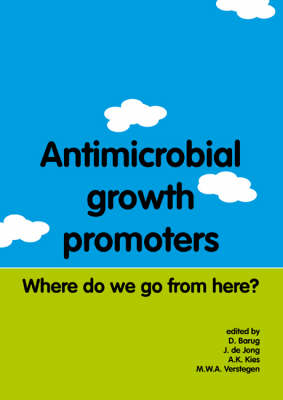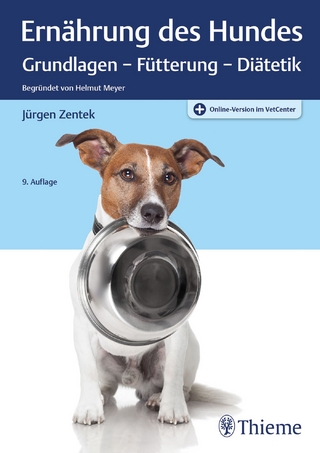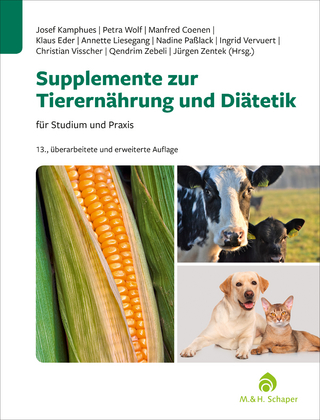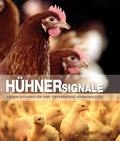
Antimicrobial growth promoters
Wageningen Academic Publishers (Verlag)
978-90-76998-87-9 (ISBN)
- Keine Verlagsinformationen verfügbar
- Artikel merken
"It is widely acknowledged that the inclusion of antimicrobial growth promoters (AGPs) in the diet of livestock increases growth rate. However, many questions arise on whether the benefits outweigh the risks, or vice versa. Recent legislative developments in the European Union and USA, recommendations by the World Health Organization, initiatives taken by the food chain, and consumer concerns all point to a widespread (voluntary) removal of antibiotic feed additives for animal growth promotion. In particular, Regulation (EC) 1831/2003 lays down provisions phasing out the authorisations of AGPs in the European Union as from 1 January 2006.
This book discusses how this will affect the use/non-use practice of AGPs. Attention is given to the current status and rational design of developments and strategies for animal feeding without the inclusion of AGPs. Topics covered include benefits and risks of AGPs, risk assessment, consumer concerns and demands, regulatory aspects and international developments, mode of action and innovative alternatives, and recent advances in the analysis of AGPs and related products.
This book contains peer-reviewed papers presented at the international conference ""Antimicrobial Growth Promoters: Worldwide Ban on the Horizon?"". The book is filled with valuable information on the pros and cons of use of AGPs as well as on alternative nutritional solutions. It is aimed at professionals and researchers in the feed and food industry."
Foreword 7; Current use of antimicrobial growth promoters in food animals: the benefits 19; S.W. Page; Abstract 19; 1. Introduction 19; 2. History 21; 3. Mode of action 22; 4. Applications and benefits of AGPs 26; 5. Variation in response to AGPs 28; 6. Recent reviews 30; 7. Emerging applications 33; 8. Conclusions 41; References 42; Use of antimicrobial growth promoters in food animals: the risks outweigh the benefits 53; H.C. Wegener; Abstract 53; 1. Introduction 53; 2. European perspective on AGPs 54; 3. Countries' experience with phasing out AGPs 54; 4. Risk-benefit considerations 56; 5. Conclusions 58; References 58; Antimicrobial growth promoters: consumer concerns and demands 59; L. Reijnders; Abstract 59; 1. Introduction 59; 2. Links with a wider debate about intensive animal husbandry 60; 3. Alternatives 61; 4. Trust in industry and regulators 61; 5. Nature of NGO concerns with risks of antimicrobial growth promoters 62. 6. Conclusion 64; References 65; Phasing out antibiotic feed additives in the EU: worldwide relevance for animal food production 69; A. Chesson; Abstract 69; 1. Introduction 69; 2. The European reaction 70; 3. The Danish "experiment" 72; 4. Relevance of the Danish experiment to other countries 74; 5. Responses in industrialised countries 75; 6. International bodies and AGPs 77; 7. AGPs in developing countries 78; 8. Conclusions 79; References 79; Non-human usage of antimicrobials: recent developments at FAO/WHO/OIE 83; H. Kruse and J. Schlundt; Abstract 83; 1. Introduction 83; 2. Past activities by WHO, FAO and OIE relating to non-human antimicrobial usage and antimicrobial resistance 85; 3. Outcome of the first joint FAO/OIE/WHO expert workshop on non-human antimicrobial usage and antimicrobial resistance: Scientific assessment 88; 4. Outcome of the second joint FAO/OIE/WHO expert workshop on non-human antimicrobial usage and antimicrobial resistance: Management options 91; 5. Follow-up of the joint FAO/OIE/WHO expert workshops on non-human antimicrobial usage and antimicrobial resistance 92; 6. Antimicrobial growth promoters 93; 7. Conclusion 94; References 94. Risk analysis applied to antimicrobial resistance: the OIE approach 97; J.F. Acar; 1. Introduction 97; 2. Risk assessment for analysing the risks to animal and public health from antimicrobial resistant microorganisms of animal origin 98; Potential human health impacts of banning antibiotics used in food animals: a case study of virginiamycin 107; T. Cox; Abstract 107; 1. Introduction 107; 2. Modelling approach, data and methods: The RRRT risk assessment framework 108; 3. Results 117; 4. Discussion 119; 5. Conclusions 121; Acknowledgments 122; References 122; Terminated use of antimicrobial growth promoters in pig production in Denmark: effects on pig welfare and productivity 127; N. Kjeldsen and J. Callesen; Abstract 127; 1. Introduction 128; 2. Impact of AGP termination on productivity 128; 3. Economic impact of AGP termination in Denmark 132; 4. Impact on the total consumption of antibiotics 133; 5. Impact on antimicrobial resistance 134; 6. Conclusion 134; References 135; Termination of AGP use and effect on subsequent production of broiler chickens in Sweden and Denmark during a 25-year period 137; M. Wierup and H.C. Wegener; Abstract 137; 1. Introduction 137; 2. Material and methods 138; 3. Results 139; 4. Discussion 145. 5. Conclusion 146; Acknowledgements 146; References 146; Molecular basis for AGP effects in poultry 149; M.D. Lee, J. Lu, B. Harmon, C.L. Hofacre, and J.J. Maurer; Abstract 149; 1. Introduction 149; 2. Materials and methods 152; 3. Results and discussion 153; 4. Conclusions 159; References 160; Rational development of novel microbial modulators 165; J. Apajalahti and A. Kettunen; Abstract 165; 1. Introduction 165; 2. Antibiotics and coccidiostats as microbial modulators 167; 3. Important shifts in intestinal microbial community 171; 4. Ranking of microbial modulators by simulation 172; 5. Examples of product development by in vitro simulations 174; 6. Significance of the product comparison 178; 7. Conclusions 179; Acknowledgements 180; References 180; Use of in vitro models of the gastrointestinal tract (TIM systems and bioassays) for studying replacements for AGPs 183; R. Havenaar, M. Minekus and K. Venema; Abstract 183; 1. Introduction 184; 2. Dynamic gastrointestinal systems 184; 3. Digestion and availability for absorption 186; 4 Organic acids 187; 5. Probiotics 188; 6. Prebiotics and dietary fibres 189; 7. Impact on health of the activity of the large-intestinal microbiota 190; 8. Conclusion 192; References 192. An overview of the Feedstuffs-RADIUS project: rapid detection of banned antibiotics in animal feeds 195; C.T. Elliott, C. Situ, C. van Poucke; Abstract 195; 1. Introduction 196; 2. Banned growth promoters 197; 3. Development of RADIUS screening tests 197; 4. Development of confirmatory tests 206; 5. Survey of animal feeds 208; 6. The future of RADIUS methods 209; Acknowledgements 210; References 210; Towards a control strategy for banned antibiotics and growth promoters in feed: the SIMBAG-FEED project 211; J. de Jong, M.J.H. Tomassen, H.J. van Egmond, J.A. van Rhijn, T. Zuidema, J. Michard, C. Genouel, G. Brambilla, J.M.G. Nunes da Costa, E. Nordkvist, W. Wagner, A. Thalmann, A. Ploger, G. Rath and C. von Holst; Abstract 211; 1. Introduction 212; 2. Results 213; 3. The proposed control strategy 231; 4. Future work 233; Acknowledgements 234; References 234; Novel approaches for the determination of probiotics in feed in the context of official control 235; R.G.K. Leuschner; Abstract 235; 1. Introduction 235; 2. Methods of analysis 236; 3. Enumeration methods 237; 4. Molecular identification methods 240; 5. Conclusions 243; Acknowledgements 244; References 244. Pitfalls and challenges for the official control of enzymes in feed 249; R. Ziebal; Abstract 249; 1. Introduction 249; 2. Methods of analysis of enzyme activities in feed additives 250; 3. Methods of analysis of enzyme activities in premixtures and feeds 252; 4. Problems associated with official control 253; 5. Conclusions 253; References 254; New authorisation of feed additives in the EU: the role of the Community Reference Laboratory and the network of National Reference Laboratories 255; C. von Holst, A.M. Jensen and G. Simone; Abstract 255; 1. Introduction 255; 2. The tasks of the CRL 256; 3. The evaluation of analytical methods for feed additives - a challenging task 258; 4. The tools of the CRL 259; 5. The evaluation of the analytical methods 264; Acknowledgements 267; References 268; The role of enzymes and betaine in antibiotic growth promoter free nutrition 269; M. Hruby and A. J. Cowieson; Abstract 269; 1. Introduction 269; 2. The benefits of AGPs 270; 3. Alternatives to AGPs 271; 4. Nutrition and the intestinal microflora 271; 5. The role of feed enzymes in AGP-free nutrition 273; 6. The role of betaine in AGP-free nutrition 277; 7. Conclusions 281; References 281. Interfacing gut health and nutrition: the use of dietary pre- and probiotics to maximise growth performance in pigs and poultry 289; A. Kocher; Abstract 289; 1. Introduction 289; 2. Terminology: pre- and probiotics 290; 3. Gut microbial populations 291; 4. Indigenous beneficial bacteria 293; 5. Probiotics affect intestinal microflora - mode of action 294; 6. Role of carbohydrates in bacterial adhesion 296; 7. The use of oligosaccharides to control intestinal health - prebiotics: mode of action 297; 8. Immunomodulation: activity of pre- and probiotics 299; 9. Effectiveness: pre-and probiotic as a tool to maximise growth performance 301; 10. Conclusions 304; References 305; Acidification of diets as an alternative to antibiotic growth promoters 311; G. Diebold and U. Eidelsburger; Abstract 311; 1. Introduction 311; 2. Mode of action of organic acids 312; 3. Acidification of diets for pigs 314; 4. Effect of the acid anion 317; 5. Combinations of acid and salt 319; 6. Organic acids and phytase act synergistically 323; 7. Organic acids in poultry 324; 8. Conclusions 324; References 324; Are herbs, botanicals and other related substances adequate replacements for antimicrobial growth promoters? 329; C. Wenk; Abstract 329; 1. Introduction: Herbs and botanicals as alternatives for antibiotics 329; 2. What are herbs, botanicals or essential oils? 331; 3. Modes of action of herbs and botanicals 332. 4. Influence of herbs or botanicals on feed intake and growth performance 333; 5. Antimicrobial and coccidiostatic activity of herbs and botanicals 335; 6. Conclusions 338; References 339; Bacteriophage: a safe and natural alternative to AGPs 341; W.E. Huff, G.R. Huff, N.C. Rath, J.M. Balog and A.M. Donoghue; Abstract 341; 1. Introduction 342; 2. Materials and methods 345; 3. Results 348; 4. Discussion 354; 5. Conclusions 357; Acknowledgements 358; References 358; Intestinal genomics for the evaluation of alternatives to AGPs: current situation and perspectives 361; T.A. Niewold; Abstract 361; 1. Introduction 362; 2. Methodology 364; 3. Current situation and perspectives 366; 4. Conclusion 366; References 367; Nutrition: immunomodulation towards Th1 or Th2 responses 369; B.M. Goddeeris; Abstract 369; 1. Introduction 369; 2. The immune orchestra 371; 3. The acute phase response and the arachidonic acid cycle 373; 4. Nutritional modulation of immune responses 374; 5. Conclusion 380; References 380; Setting and meeting standards for the efficient replacement of pronutrient antibiotics in poultry and pig nutrition 381. G.D. Rosen; Abstract 381; 1. Introduction 381; 2. Materials and methods 382; 3. Results 384; 4. Applications and discussion 388; 5. Conclusions 395; References 396; Appropriate use of antimicrobial growth promoters: oxymoron or opportunity? 399; S.W. Page; Abstract 399; 1. Introduction 399; 2. Appropriate use 400; 3. Risk assessment 401; 4. Risk management 402; 5. Conclusions 407; References 407; Index 413.
| Erscheint lt. Verlag | 21.3.2006 |
|---|---|
| Sprache | englisch |
| Maße | 170 x 240 mm |
| Gewicht | 1 g |
| Themenwelt | Veterinärmedizin ► Allgemein ► Tierernährung / Tierhaltung / Tierzucht |
| Weitere Fachgebiete ► Land- / Forstwirtschaft / Fischerei | |
| ISBN-10 | 90-76998-87-6 / 9076998876 |
| ISBN-13 | 978-90-76998-87-9 / 9789076998879 |
| Zustand | Neuware |
| Haben Sie eine Frage zum Produkt? |
aus dem Bereich


